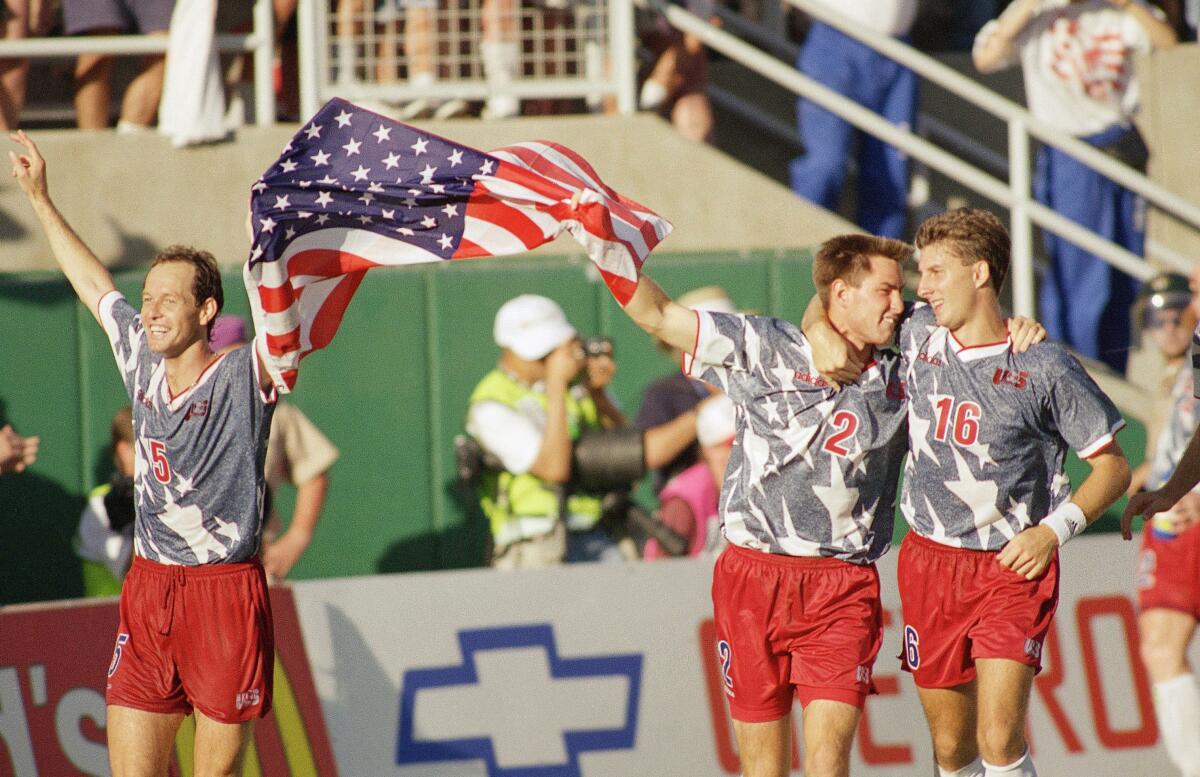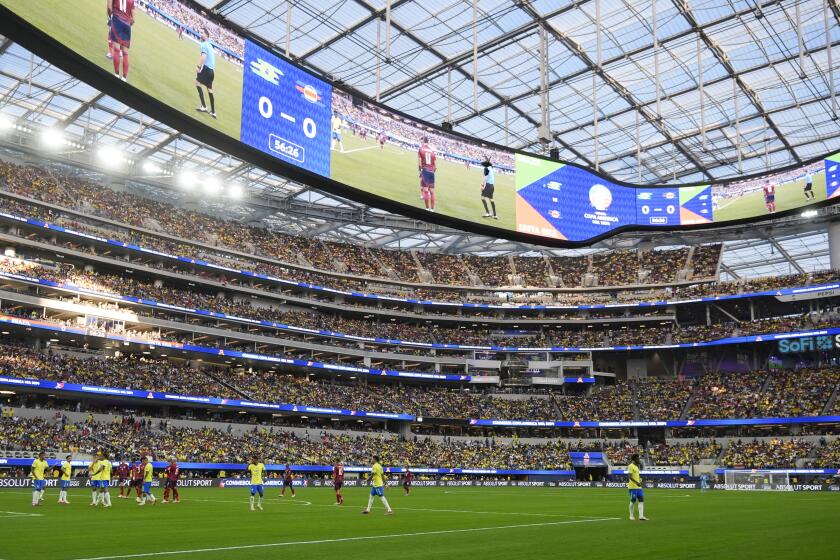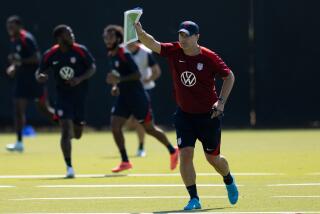U.S. Soccer aims to use 2026 World Cup to jump-start youth development

- Share via
The 1994 World Cup, the only men’s World Cup played in the U.S., left an enduring legacy with the birth of Major League Soccer, the first-division league FIFA required the country to create as a condition for hosting the tournament.
Thirty years later MLS, which is about to expand to 30 teams, is the largest soccer league in the world. So with the World Cup returning in less than two years, U.S. Soccer has been searching for a suitable encore, one that would complement MLS by growing the sport at the grassroots level.
On Thursday it announced one such program, the Soccer Forward Foundation.
“If you think about the MLS coming out of ‘94 and the scale of that ambition, we launched Soccer Forward with a similar ambition,” said JT Batson, U.S. Soccer’s chief executive officer. “MLS is the pinnacle of men’s professional soccer in the United States. We’re really focused on Soccer Forward being about how you start making sure that every American can participate in the game we love.”
SoFi Stadium, which will host games during the 2026 FIFA World Cup, drew positive reviews from Brazilian and Costa Rican players, as well as the fans.
The foundation, launched after hundreds of meetings with stakeholders and extensive engagement with more than a million players, will attempt to harness the surging interest in soccer, especially during the run-up to the World Cup, to create a positive impact. According to U.S. Soccer, national, regional and local sponsors will drive participation at the grassroots level and provide the necessary resources to build entry points into the sport.
“We’ve been working for well over a year, talking to our members, talking to the professional leagues and teams and nonprofits and school districts and state and federal government [officials,]” Batson said. “We have a number of folks who are engaged with planning out pilot programs. What we’re focused on is how do you get soccer in more schools? How do you support soccer within Boys and Girls Clubs and YMCAs and churches? How do you make sure that there are more safe spaces to play? How do you make sure that governments are investing more in fields?
“Those are the kind of advocacy programs that we’ll be doing.”
American players are becoming more common in Italy’s Serie A, and the country’s top soccer league is helping the USMNT prepare for World Cup qualifying.
Batson declined to discuss to level of spending that will be required to make all that happen, saying only that the investment will be “into nine figures” for the next few years.
The foundation says it is built around the premise that “sports improves health, happiness, confidence and connections.” And because soccer is the most accessible sport, it has both the greatest opportunity and biggest responsibility to ensure access to those benefits.
Doing that means increasing the number of free and low-cost programs; growing participation for players, coaches, officials and fans; and improving the health, well-being and development of participants.
“There’s an incredible opportunity for tens of millions more people to participate,” Batson said. “We know that participation in soccer has all sorts of positive benefits, health benefits, mental health benefits, social benefits. There are all sorts of positives that come with people doing something they love.
“And playing soccer is a great opportunity for that.”









